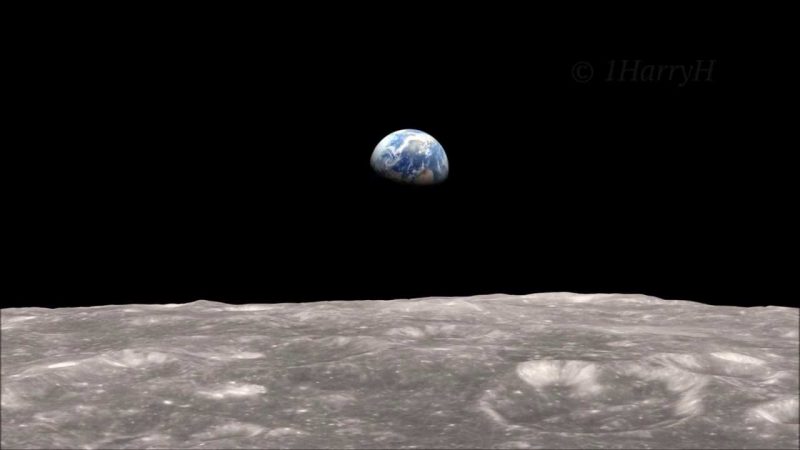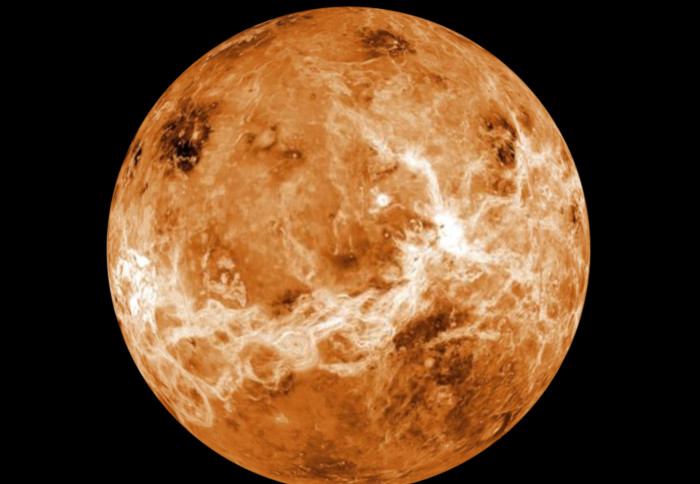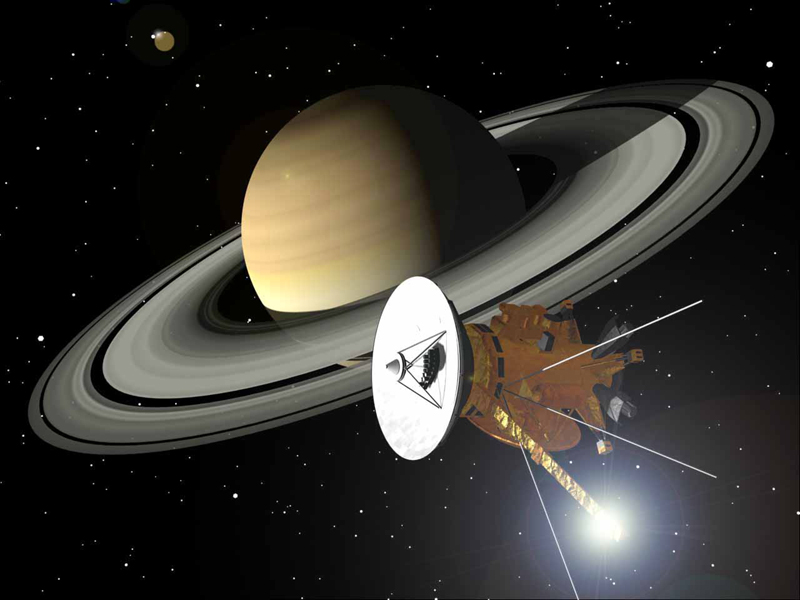Apollo Program – Quiz

The year 2019 celebrated the 50th anniversary of the first humans landing on the Moon. Can you match the descriptions with the right answers?
Quiz: The Apollo Program
1. The number of manned spacecraft that went to the Moon: (C) nine
(1) Apollo 8 was the first manned mission to the Moon. Apollo 10, the dress rehearsal for Apollo 11, carried out all the procedures, even taking the Lunar Module down to within 16 km miles of the lunar surface. (2) Six Apollo missions landed astronauts on the Moon. (3) Famously, the damaged Apollo 13 went around the Moon and used a boost from lunar gravity to get home.
2. He orbited in the command module when Armstrong and Aldrin landed on the Moon: (B) Michael Collins
Frank Borman was the Commander of Apollo 8. Al Worden was the Command Module Pilot of Apollo 15.
3. He took the iconic photo known as “Earthrise” (shown in the header image): (B) Bill Anders
On December 24, 1968, when Apollo 8 came around from the far side of the Moon, the crew saw the Earth in the sky above the Moon.
4. The first person to drive a vehicle on the Moon: (A) Dave Scott
Pete Conrad and Alan Bean, (Apollo 12) had to walk to the sites they visited and carry the rock samples back. There was a cart for the Apollo 14 astronauts, but the great innovation was the Lunar Roving Vehicle (LRV). Apollo 15 and the two missions that followed had the benefit of the LRV. Dave Scott was the first to drive one, and John Young, commander of Apollo 16, was the second.
5. The first American in Space later hit golf balls on the Moon: (C) Alan Shepard
John Glenn was the first American to orbit the Earth, but Alan Shepard (Commander of Apollo 14) preceded him into space. Armstrong was a golfer, but not a lunar golfer.
6. Here's where you could see the command module of Apollo 10: (A) Science Museum, London
The National Air and Space Museum in Washington DC displays the Apollo 11 command module. The Canadian Museum of Nature has a Moon rock brought back by Apollo 17. But only one of the Apollo command modules is outside the USA, and it's in the Science Museum in London. The Saturn V launch vehicle that sent astronauts to the Moon was derived from the Nazi V-2 weapon that brought death and destruction to to London. Not far from the Apollo 10 command module is a V-2.
7. The crew that landed near NASA's Surveyor 3 probe and returned some parts of it to Earth: (A) Apollo 12
This was the only time that a manned crew met up with an old probe. It was of interest to NASA for various reasons, including a record of how exposure on the Moon had affected it.
8. He left a photograph of his family on the Moon: (B) Charlie Duke
Buzz Aldrin (and Neil Armstrong) left a gold olive branch representing “a wish for peace for all mankind”. Among other things, Dave Scott (and Jim Irwin) left a feather from the Air Force Academy's mascot falcon. They had used it to demonstrate Galileo's principle that gravity accelerates everything equally. On the airless Moon a hammer and a feather dropped together.
9. According the Guinness Book of Records, this Apollo crew went the greatest distance from Earth ever achieved by humans: (C) Apollo 13
The citation reads:
Harrison Schmitt preceded Cernan into the Lunar Module. Jim Lovell was the only person to go twice to the Moon without landing on it. He flew on Apollo 8 and Apollo 13.
How did you do?
If you aren't an Apollo aficionado with all the answers, have you learned something from the quiz?
Quiz: The Apollo Program
- The number of manned spacecraft that went to the Moon: (A) three; (B) six; (C) nine
- He orbited in the command module when Armstrong and Aldrin landed on the Moon: (A) Frank Borman; (B) Michael Collins; (C) Al Worden
- He took the iconic photo known as “Earthrise” (shown in the header image): (A) Buzz Aldrin; (B) Bill Anders; (C) Stu Roosa
- The first person to drive a vehicle on the Moon: (A) Dave Scott; (B) Pete Conrad; (C) John Young
- The first American in Space later hit golf balls on the Moon: (A) John Glenn (B) Neil Armstrong; (C) Alan Shepard
- Here's where you can see the Apollo 10 command module: (A) Science Museum, London; (B) National Air and Space Museum, Washington DC; (C) Canadian Museum of Nature, Ottawa
- The crew that landed near NASA's Surveyor 3 probe and returned some parts of it to Earth: (A) Apollo 12; (B) Apollo 14; (C) Apollo 16
- He left a photograph of his family on the Moon: (A) Buzz Aldrin; (B) Dave Scott; (C) Charles Duke;
- According to the Guinness Book of Records, this Apollo crew went the greatest distance from Earth ever achieved by humans: (A) Apollo 17; (B) Apollo 13; (C) Apollo 10
- The last man on the Moon: (A) Harrison Schmitt; (B) Jim Lovell; (C) Gene Cernan
1. The number of manned spacecraft that went to the Moon: (C) nine
(1) Apollo 8 was the first manned mission to the Moon. Apollo 10, the dress rehearsal for Apollo 11, carried out all the procedures, even taking the Lunar Module down to within 16 km miles of the lunar surface. (2) Six Apollo missions landed astronauts on the Moon. (3) Famously, the damaged Apollo 13 went around the Moon and used a boost from lunar gravity to get home.
2. He orbited in the command module when Armstrong and Aldrin landed on the Moon: (B) Michael Collins
Frank Borman was the Commander of Apollo 8. Al Worden was the Command Module Pilot of Apollo 15.
3. He took the iconic photo known as “Earthrise” (shown in the header image): (B) Bill Anders
On December 24, 1968, when Apollo 8 came around from the far side of the Moon, the crew saw the Earth in the sky above the Moon.
4. The first person to drive a vehicle on the Moon: (A) Dave Scott
Pete Conrad and Alan Bean, (Apollo 12) had to walk to the sites they visited and carry the rock samples back. There was a cart for the Apollo 14 astronauts, but the great innovation was the Lunar Roving Vehicle (LRV). Apollo 15 and the two missions that followed had the benefit of the LRV. Dave Scott was the first to drive one, and John Young, commander of Apollo 16, was the second.
5. The first American in Space later hit golf balls on the Moon: (C) Alan Shepard
John Glenn was the first American to orbit the Earth, but Alan Shepard (Commander of Apollo 14) preceded him into space. Armstrong was a golfer, but not a lunar golfer.
6. Here's where you could see the command module of Apollo 10: (A) Science Museum, London
The National Air and Space Museum in Washington DC displays the Apollo 11 command module. The Canadian Museum of Nature has a Moon rock brought back by Apollo 17. But only one of the Apollo command modules is outside the USA, and it's in the Science Museum in London. The Saturn V launch vehicle that sent astronauts to the Moon was derived from the Nazi V-2 weapon that brought death and destruction to to London. Not far from the Apollo 10 command module is a V-2.
7. The crew that landed near NASA's Surveyor 3 probe and returned some parts of it to Earth: (A) Apollo 12
This was the only time that a manned crew met up with an old probe. It was of interest to NASA for various reasons, including a record of how exposure on the Moon had affected it.
8. He left a photograph of his family on the Moon: (B) Charlie Duke
Buzz Aldrin (and Neil Armstrong) left a gold olive branch representing “a wish for peace for all mankind”. Among other things, Dave Scott (and Jim Irwin) left a feather from the Air Force Academy's mascot falcon. They had used it to demonstrate Galileo's principle that gravity accelerates everything equally. On the airless Moon a hammer and a feather dropped together.
9. According the Guinness Book of Records, this Apollo crew went the greatest distance from Earth ever achieved by humans: (C) Apollo 13
The citation reads:
The greatest distance from Earth achieved by humans was when the crew of the Apollo 13 were at their farthest point, 254 km (158 miles) from the lunar surface, on the far side of the Moon, and 400,171 km (248,655 miles) above the Earths surface.10. The last man on the Moon: (C) Gene Cernan
Harrison Schmitt preceded Cernan into the Lunar Module. Jim Lovell was the only person to go twice to the Moon without landing on it. He flew on Apollo 8 and Apollo 13.
How did you do?
If you aren't an Apollo aficionado with all the answers, have you learned something from the quiz?
You Should Also Read:
Space at the Science Museum London
Art on the Moon - Fallen Astronaut
In the Shadow of the Moon - film

Related Articles
Editor's Picks Articles
Top Ten Articles
Previous Features
Site Map
Content copyright © 2023 by Mona Evans. All rights reserved.
This content was written by Mona Evans. If you wish to use this content in any manner, you need written permission. Contact Mona Evans for details.







